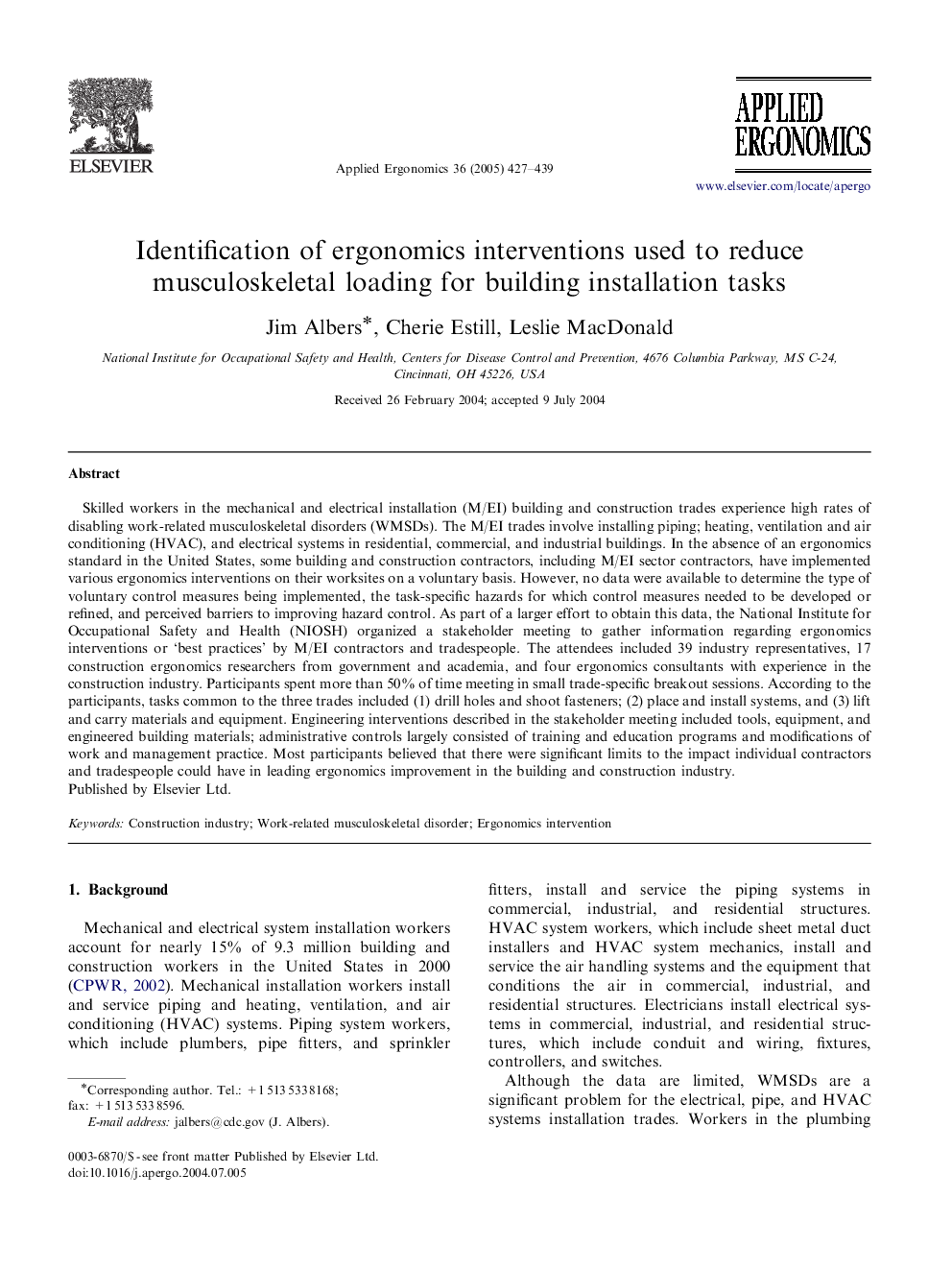| کد مقاله | کد نشریه | سال انتشار | مقاله انگلیسی | نسخه تمام متن |
|---|---|---|---|---|
| 10366167 | 872413 | 2005 | 13 صفحه PDF | دانلود رایگان |
عنوان انگلیسی مقاله ISI
Identification of ergonomics interventions used to reduce musculoskeletal loading for building installation tasks
دانلود مقاله + سفارش ترجمه
دانلود مقاله ISI انگلیسی
رایگان برای ایرانیان
کلمات کلیدی
موضوعات مرتبط
مهندسی و علوم پایه
مهندسی کامپیوتر
تعامل انسان و کامپیوتر
پیش نمایش صفحه اول مقاله

چکیده انگلیسی
Skilled workers in the mechanical and electrical installation (M/EI) building and construction trades experience high rates of disabling work-related musculoskeletal disorders (WMSDs). The M/EI trades involve installing piping; heating, ventilation and air conditioning (HVAC), and electrical systems in residential, commercial, and industrial buildings. In the absence of an ergonomics standard in the United States, some building and construction contractors, including M/EI sector contractors, have implemented various ergonomics interventions on their worksites on a voluntary basis. However, no data were available to determine the type of voluntary control measures being implemented, the task-specific hazards for which control measures needed to be developed or refined, and perceived barriers to improving hazard control. As part of a larger effort to obtain this data, the National Institute for Occupational Safety and Health (NIOSH) organized a stakeholder meeting to gather information regarding ergonomics interventions or 'best practices' by M/EI contractors and tradespeople. The attendees included 39 industry representatives, 17 construction ergonomics researchers from government and academia, and four ergonomics consultants with experience in the construction industry. Participants spent more than 50% of time meeting in small trade-specific breakout sessions. According to the participants, tasks common to the three trades included (1) drill holes and shoot fasteners; (2) place and install systems, and (3) lift and carry materials and equipment. Engineering interventions described in the stakeholder meeting included tools, equipment, and engineered building materials; administrative controls largely consisted of training and education programs and modifications of work and management practice. Most participants believed that there were significant limits to the impact individual contractors and tradespeople could have in leading ergonomics improvement in the building and construction industry.
ناشر
Database: Elsevier - ScienceDirect (ساینس دایرکت)
Journal: Applied Ergonomics - Volume 36, Issue 4, July 2005, Pages 427-439
Journal: Applied Ergonomics - Volume 36, Issue 4, July 2005, Pages 427-439
نویسندگان
Jim Albers, Cherie Estill, Leslie MacDonald,